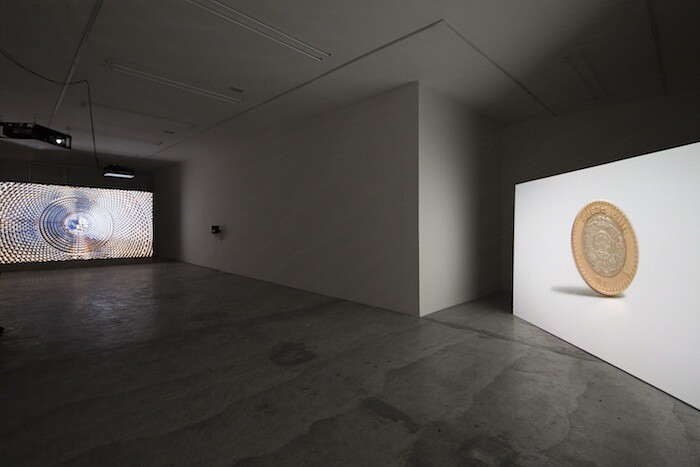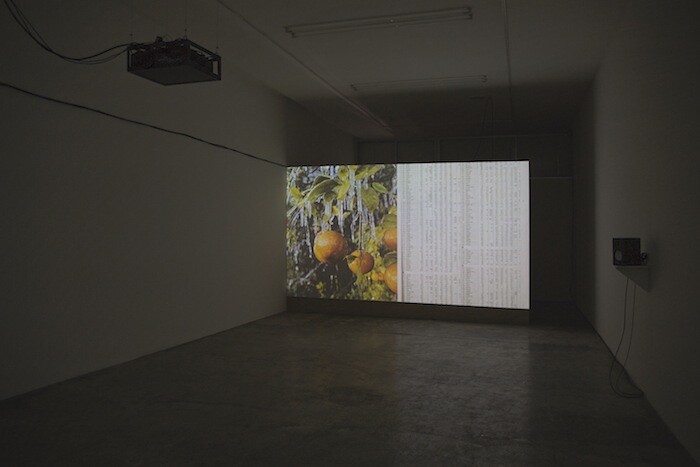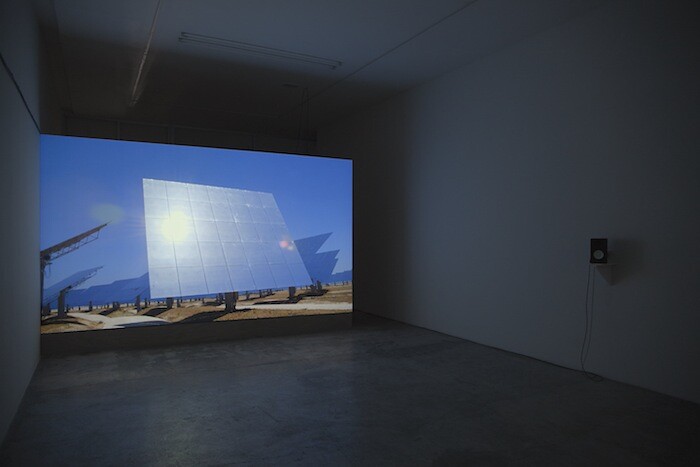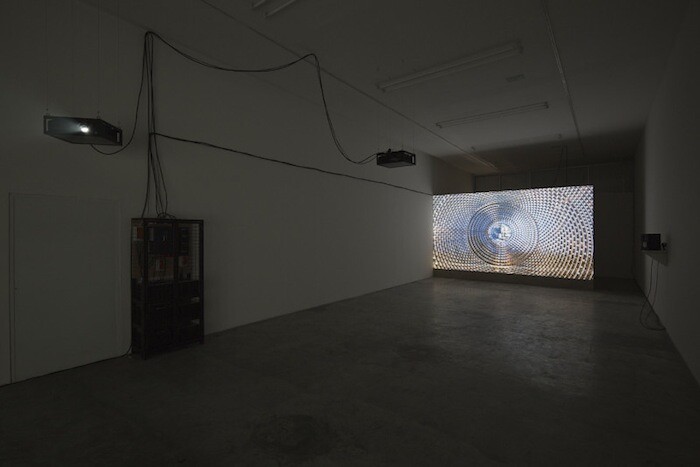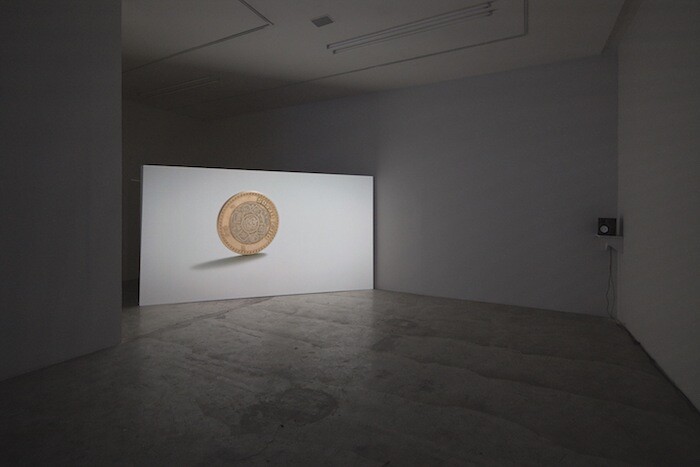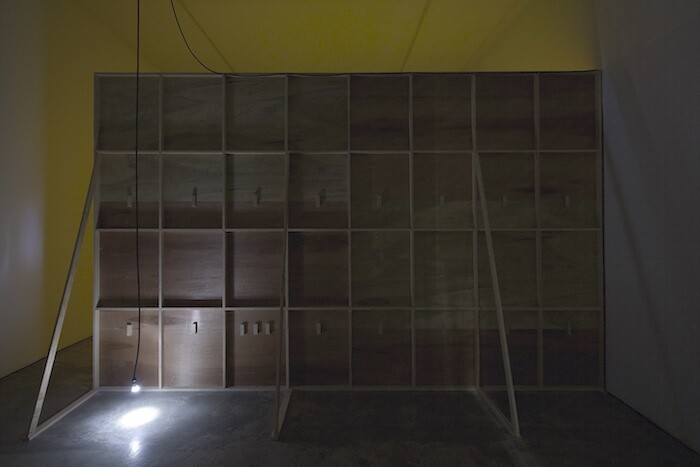As the central body in our planetary system, the sun has been revered through history as the source of our energy and the basis of our calendars. “Ancient Lights,” Nicholas Mangan’s first solo exhibition in Mexico City, is a sun worshipper’s investigation into the myriad conceptions of our star, from the theological to the technological. It features an installation of two new films (both Ancient Lights, 2016), projected one in front of each other at different angles in this L-shaped gallery, which explore the unstable relationship between humanity and nature as well as different kinds of energies: motion, sound, electricity, and magnetism.
Scientists have long considered how solar variations—like sunspots—might relate to changes in climate and associated human activities. Mangan’s first film—displayed close to the gallery entrance on a suspended wall, at 90-degree angle to the room’s right wall—charts and compiles these investigations. The 13-minute loop presents a montage of different footage: the sun reflecting off the heliostats at the Gemasolar Thermosolar Plant in Andalucía; the air contamination visible in the skyline of Mexico City; audiovisual data from NASA’s Solar and Heliospheric Observatory project, which tracks the relationship between sunspots and weather changes; oranges covered in frost during an unseasonable cold snap in Florida, which caused a corresponding fall in market price; rotating dendrochronology specimens of the Laboratory of Tree-Ring Research at the University of Arizona; and notes from the Soviet-era scientist Alexander Chizhevsky, who related solar cycles to revolutionary activity throughout history.
These heterogeneous historical and scientific contexts are grafted together with alternating silences and mechanical sounds, suggesting jumps from one energy state to another. A pattern of concentric circles connects the images: the Spanish solar power plant deploys a system of concentric mirrors which store thermal energy before it is converted to electricity; the tree specimens used for dendrochronology show beautiful growth rings, in which sunbursts are recorded. These spinning logs evoke the vinyl records that also store a form of energy: sound.
In the second film— projected onto another suspended wall, at a more acute angle—concentric patterns can be found in a Mexican ten-peso coin depicting the Aztec Sun Stone, which has a solar deity carved into its center, and on the subsequent rings of astronomical data and chronological cycles. The coin in the film dances relentlessly in circles. The artist, in an accompanying interview, draws special attention to the fact that the Aztecs thought that the everlasting nature of the sun was dependent on human sacrifice. He relates this mythology to economics, according to which the extraction of any energy demands some kind of loss. But, as the first law of thermodynamics states, energy only transforms from one state to another, it never dies. We might say that the film highlights the different conceptions of energy transferences throughout time, with the sun as the fundamental source.
Mangan’s interest in alternative sources of power can be traced back through his earlier works. In Progress in Action (2013)—a reflection on the Bougainville Civil War (fought between Papua New Guinea and islanders seeking independence) and a tribute to the Bougainville Revolutionary Army’s use of coconuts as an alternative source of fuel—the artist used refined copra oil to power the installation engines. Solar energy also gives life to “Ancient Lights.” The two-channel installation is powered by solar panels installed on the gallery’s roof. Although the electrical system is sculpturally installed between the two projections, the solar panels are not accessible to the public, leaving the visual cycle incomplete. This sustainable system will remain in place beyond the duration of the show and thus have an enduring impact on the gallery. This is a political reminder of the imperative to develop renewable and sustainable sources such as solar power as an alternative to fossil fuels. This need is felt particularly urgently in Mexico City, where the the level of pollution is frequently toxic. Though there is some investment in renewable energies in Mexico, solar power requires more laws, policies, and institutions, meaning political will, to regulate and promote systems of clean energy that have vital benefits for the quality of the environment and public health.
In “Ancient Lights,” fragments of visual information link Mangan’s archeological investigation of the sun—an interdisciplinary digging that interrelates materials and ideas—a circuitous journey that reminds us of the network of energies that surround us. The simplest and best way to observe the sun is indirectly.

